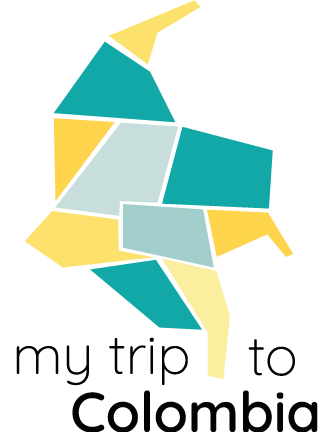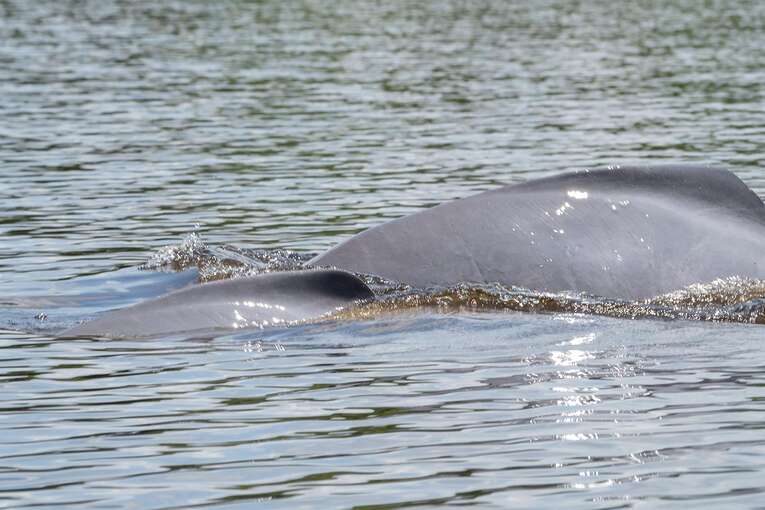In the Colombian Amazon and Orinoquia region, you can observe pink dolphins. A mysterious aura surrounds the river dolphin, and it is one of the totem animals for the indigenous communities of the regions concerned.
During our stay in San José del Guaviare, we had the chance to meet the pink Amazonian dolphins, but it was much more than that. Above all, we met Pacho, leader of a tourism project like no other!
In this region of Guaviare affected by armed conflict, tourism is now offering new prospects to the population. Pacho’s project is an example of what tourism can bring to families who have experienced violence and war.
Disclaimer: we apologize in advance for any grammatical or syntactic errors, as our native language is not English (we're a Colombian-French couple), so we hope you'll forgive us and still enjoy the information we share with you! Please note that all the information on our blog is based on our own experience, and is checked and updated regularly.
Contents
Related posts
We were fed up with paying fees abroad
So for several years now, we’ve been using a free bank debit card specially designed for travelers, and we don’t pay any more fees abroad – no more!
Exclusive 5% Off Discount For you
Best Travel insurance for Colombia
Our partner offers the best rates and a 5% discount for our blog readers! (regardless of travel dates)
Road to Laguna Damas de Nare
Peace tourism in Colombia

We meet our guide Marcos (Playa Guio) at 5 a.m. to set off from San Jose del Guaviare in the direction of Laguna Damas de Nare.
After a 1h30 lancha ride on the rio Guaviare and a 1h walk through the forest, we finally arrive at Pacho’s house, greeted by a cup of coffee and a big smile. Pacho’s wife prepares chicken sancocho on the wood-burning stove for lunch.
The house is modest, with a tin roof and wooden walls. We’re here on the edge of a lagoon connected to canals irrigated by the Rio Guaviare. In the rainy season, the entire plain is flooded, the path that usually takes 3 hours to reach San José by 4×4 is impassable and the only means of transport is by boat.





Here we are in the middle of nothing, as in all of Guaviare and the Amazon in general. Pacho lives far from any infrastructure: no town, no roads, no means of communication… the Internet arrived a short while ago, thanks to the installation of a satellite antenna that will enable Pacho to be more reachable than before.
From coca farmer to tour guide
Pacho, leader of the Laguna Damas de Nare tourism project

Pacho’s project around the Laguna Damas de Nare is, like that of Playa Güio, a pure product of the government’s illicit coca crop conversion program a few years ago.
These are aid programs that encourage former coca growers to abandon illicit crops and re-enter the world of formal employment, developing legal productive projects.
Pacho tells us about his life as a former cocalero, and the atmosphere that prevailed when the paramilitaries (AUC) controlled the area. His fatigue and relief at giving up coca cultivation to devote himself to welcoming tourists and observing the pink dolphins of the Laguna Damas de Nare.
Good to know
Comprehensive national illicit crop substitution program (PNIS)
Following the 2016 peace accords, the government launched a program to try to encourage coca-growing peasants to abandon this activity by replacing it with another activity.
Over 100.000 families across the country have signed up to this program.
In reality, some conversion projects are working, others are not. Barely 20% of registered families now have a productive project. The results are therefore rather mixed.
As with the peace process, many of the measures announced have not been respected, fuelling idleness and the resumption of illegal practices.
Swimming with pink dolphins
Laguna damas de Nare in the Guaviare

The discussions are going well with Pacho and Marcos, but it’s time to put on the life jackets and set off to meet the pink dolphins!
Pacho and his wife have lived here for over 30 years, and have always known the Laguna’s pink dolphins, or “toninas” as they’re known here.
We start sailing on the Laguna Damas de Nare and Pacho calls the toninas his famous “tatiiiiis”! And a few seconds later, there they are… Three or four dolphins start following us, near and far, as if they’d answered Pacho’s call .
Responsible tourism
It’s important to point out that the pink dolphins of Laguna Damas de Nare are not captive, domesticated or fed. This is their natural environment, a place where dolphins have always lived, fed themselves and reproduced.
We dive into the water in our life jackets, hoping to be approached by the dolphins. Above all, it’s an opportunity to continue our discussions with Marcos and Pacho. Meanwhile, the dolphins come and go, disappear, circle us, play with the boat’s rope – magic.
Once again, no bait is used to “attract” the dolphins and force them to interact. They decide whether or not to come, to stay, to interact. As with any wild animal, you have to be lucky. Some days, the dolphins come close and touch people, other times you don’t see them at all.
Good to know
Animals and responsible tourism
As tourists, we have a role to play with tourism operators. Don’t encourage bad practices, especially when it comes to observing wild animals. No interaction should be provoked with wild animals. Wild animals show or don’t show, interact or don’t interact, and man should have the minimum impact on them.
To bait a wild animal with food to facilitate interaction with humans is to provoke a change in its natural behavior and, ultimately, to jeopardize its survival.
An unforgettable experience
Finally, a dolphin approaches Sam and rubs against his legs! The contact with his skin is so soft! The dolphin pushes his behind with its rostrum, he’s there, circling him at 20 cm, I can see his white skin through the dark lake water, a unique moment, a totally crazy experience he’ll remember for a long time..
Not everyone will be so lucky, but everyone will be able to enjoy the simple presence of the dolphins playing around us, frequently returning to the surface.
After an hour in the water, it’s time to head to Pacho’s for lunch.
It’s with full bellies, after a good home-made chicken sancocho, that we set off on our return journey. We part reluctantly from Pacho, his smile and his heart-piercing gaze.



Dolphins, but not only dolphins!
Along the way, we’ll have the chance to enjoy the local fauna: mico titi (squirrel monkey), churuco (woolly monkey), birds, and we’ll pass by a canal where we’re told it’s better not to swim, due to the presence of pirañas..
Back to San José del Guaviare in the voladora (fast lancha) after this rich and intense day, our thoughts wander and we slowly drift off to sleep. It’s clear that this region has managed to move us, both with its history and its exceptional natural beauty!







River dolphins in Colombia
River dolphins (otherwise known as Amazonian pink dolphins) can be found in many of Colombia’s rivers. Mainly in the Orinoquia and Amazonica regions.
As explained in our post on spotting pink dolphins in Colombia, the easiest places to see river dolphins are :
- Puerto Nariño and the Tarapoto lakes, accessible from Leticia in the Amazon region
- Puerto Gaitan, accessible from Villavicencia in Meta
- Laguna Damas de Nare, accessible from San José del Guaviare
Book a tour to visit Guaviare
Best local agency in San José
Responsible tourism
Marcel’s agency develops the idea that tourism has a major role to play in the conservation of Amazonian ecosystems and the establishment of peace in the territory. They offer visitors the chance to discover all the beauty of the Guaviare while respecting local communities.
Where to stay in San José
San José del Guaviare

Hotel
Hotel El Aeropuerto
Hotel El Aeropuerto is, as its name suggests, located right next to San José del Guaviare airport. With its swimming pool, nice common areas and all the services of a classic hotel.
San José del Guaviare

Hotel
Hotel Quinto Nivel
The Hotel Quinto Nivel is one of San José del Guaviare’s best-known hotels. Most local agencies lodge their clients in this hotel.
San José del Guaviare

Eco Lodge
Playa Guio
Playa Guio is a haven of peace in the middle of nature, a 20-minute cab ride from the center of San José del Guaviare. On site, you’ll find the warmth of the Melo family, a large common room where you can eat and have a good time, a large hut for those who want to sleep cheaply in a hammock, and two private cabins for those who want privacy.
How to get to San José del Guaviare
Around San José del Guaviare lies the Laguna Damas de Nare, only accessible with a local guide, by lancha or 4×4 depending on the season.
Getting to Guaviare by bus
BUS | Bogota <> San José del Guaviare (8h)
- Fare: approx. $70.000 COP
- Companies: Flota La Macarena
- Departures: all day, with night bus departures as well.
BUS | Villavicencio <> San Jose del Guaviare (5h)
- Fare: approx. $50.000 COP
- Companies: Flota La Macarena
- Departures: approximately every hour
Getting to Guaviare by plane
PLANE | Bogota <> San José del Guaviare (1h15)
- Departures: Monday, Wednesday, Thursday, Friday, Saturday, Sunday
- Fare: approx. $210.000 COP one-way
- Airline: Satena, Clicair


